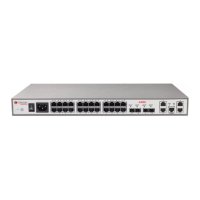A10E/A28E/A28F Configuration Guide
3 IP services
This chapter introduces basic principle and configuration of routing features, and provides the
related configuration applications, including the following chapters:
ARP
Layer 3 interface
Default gateway
DHCP Client
DHCP Relay
DHCP Snooping
DHCP options
3.1 ARP
3.1.1 Introduction
In TCP/IP network environment, each host is assigned with a 32-bit IP address that is a logical
address used to identify host between networks. To transmit packet in physical link, you must
know the physical address of destination host, which requires mapping IP address to physical
address. In Ethernet environment, physical address is 48-bit MAC address. Users have to
transfer the 32-bit destination host IP address to 48-bit Ethernet address for transmitting
packet to destination host correctly. Then Address Resolution Protocol (ARP) is applied to
analyze IP address to MAC address and set mapping relationship between IP address and
MAC address.
ARP address mapping table includes the following two types:
Static entry: bind IP address and MAC address to avoid ARP dynamic learning cheating.
− Static ARP address entry needs to be added/deleted manually.
− No aging to static ARP address.
Dynamic entry: MAC address automatically learned through ARP.
− This dynamic table entry is automatically generated by switch. You can adjust partial
parameters of it manually.
− The dynamic ARP address entry will age at the aging time if no use.

